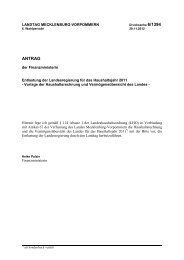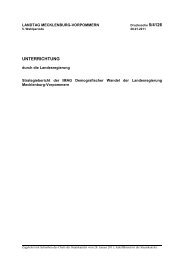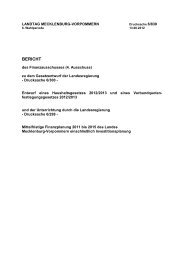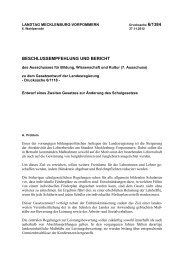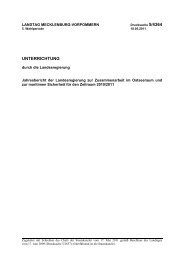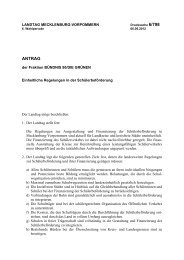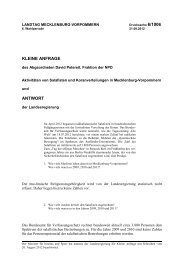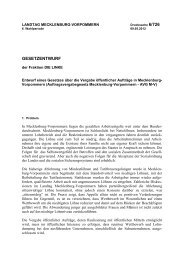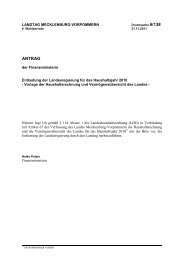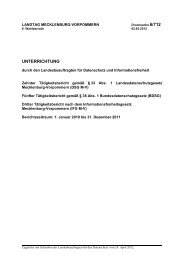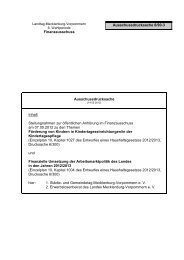Baltic Rim Economies - Baltic Port List
Baltic Rim Economies - Baltic Port List
Baltic Rim Economies - Baltic Port List
Create successful ePaper yourself
Turn your PDF publications into a flip-book with our unique Google optimized e-Paper software.
Expert article 869 <strong>Baltic</strong> <strong>Rim</strong> <strong>Economies</strong>, 21.12.2011 Quarterly Review 5�2011<br />
Russian finance system on the waves of global finance crisis<br />
By Sergey Dubinin<br />
European sovereign debt crisis dramatically enlarged the<br />
business risks of financial markets and paralyzed the<br />
European recovery. Local problem of the overleveraged<br />
Greek government has transformed into global financial<br />
burden and undermined the business community<br />
confidence. The 2011 rate of the European countries GDP<br />
growth slowed down and the Russian economy<br />
development was not an exception. 2011 year forecast<br />
diminished from 4.5% to 3.5%. The 2012 – 2014 economic<br />
growth would doubtfully overcome 4.0% annual rate. Such<br />
dates are very close to the other Eastern European<br />
countries and significantly lower the average BRICS<br />
country level.<br />
The global financial turmoil shocked the Russian<br />
Finance System as well. The Russian stock market<br />
volatility is a result of the foreign short-term investors sell<br />
off of the Russian liquid assets and capital withdrawal.<br />
Thus the Russian ruble (RUR) exchange rate devaluated in<br />
2011 August – October by 12% in spite of the stable<br />
surplus of the current balance of payment.<br />
The officially declared strategic task of Russian<br />
Government is the acceleration of GDP growth and<br />
institutional and technical modernization. It`s the economic<br />
policy goal – to diversify the structure of national economy<br />
and to improve the Russian business climate. Today there<br />
exists overestimation of the Russian economy risks (S&P<br />
rating is only BBB). It blocked the investments process and<br />
hinged the post-crisis recovery.<br />
But the main danger for Russian economic growth<br />
nowadays is the potential new wave of EU and USA highly<br />
probable recession. It should decrease this economies<br />
demand for Chinese manufactured goods, Indian services<br />
and Russian commodities. The level of oil and gas prices<br />
has a key vital importance for Russian fiscal and monetary<br />
stability.<br />
Russian Federal Budget is balanced in 2011. But in<br />
2012 – 2014 budget expenditures forecast would be slightly<br />
larger than revenues. Budget deficit would be about 1.3 -<br />
1.7% of GDP. The government predicts that the deficit-free<br />
budget should be achieved by 2015. Russian sovereign<br />
debt to GDP does not exceed 10%. Russian Government<br />
Reserve Fund was grown up to over RUR 1.5 trln. And the<br />
National Wealth Fund should reach RUR 2.6 trln. The<br />
Central Bank of Russia (CBR) gold and foreign currency<br />
reserves reached more than $550 bn., which quantity is<br />
bigger than the hole amount of all Russian public and<br />
private foreign obligations.<br />
Minister of Economic Development Elvira Nabiullina<br />
said on the “Russia Calls” Forum in October 2011: “Unlike<br />
in 2008 a financial sector is in good condition. Since then<br />
banks have significantly improved their foreign currency<br />
positions and quality of their assets.” If commodity prices<br />
do not collapse the Russian economy, told Minister, will<br />
continue to growth and the Ruble will remain more or less<br />
stable. By her estimate in a worst case scenario i.e. the<br />
price of oil per barrel falls to around $60, the Federal<br />
Budget deficit could soar to 4.5% of GDP in 2012.<br />
Russian bank sector has a dual nature: 73 largest<br />
banks concentrate more 85 per cent of sector assets.<br />
About 1000 banks have less 15 per cent of assets. At the<br />
crisis period Ministry of Finance and Central Bank of<br />
Russia succeeded to prevent mass corporate bankruptcies,<br />
19<br />
stabilized the financial system. Monetary powers extended<br />
subordinated loans to the banks, allowed to include its in<br />
the formation of up to 15 per cent of Tier 1 capital. Ministry<br />
of Finance issued OFZ bonds that banks could count as<br />
Tier 1 capital. Those efforts were combined with<br />
strengthening the bank sector supervision and control.<br />
In the 2008-2009 crisis period the CBR sanctions were<br />
rather limited, only 80 bank licenses were withdrawn. After<br />
crisis market capitalization value of the bank sector<br />
declined to the dates 30% below pre-crisis level. In 2010 –<br />
2011 the new lending cycle began. One year volume of the<br />
bank credit to corporate sector increased by 12 – 15% vs.<br />
30 – 40% before crisis. Russian banks are very close to the<br />
Basel-3 requirements. Tier 1 capital / assets quota is more<br />
11%. The quota of the “toxic assets”, estimated by CBR, is<br />
about only 9%.<br />
In October 2011 CBR and Ministry of Finance declared<br />
the new wave anti-crisis protection program – to apply bind<br />
over lending leverage to support the Bank Sector liquidity.<br />
Corporate lending is growing more fast in second half of<br />
2011 – by 1.4-1.5% every month.<br />
In the same time the CBR monetary policy needs the<br />
very complicated balance between the ruble exchange<br />
rate stability, the banking credit multiplication, money<br />
supply control. In 2011 the inflation rate (CPI index) is<br />
about 6.0 - 6.5%. The CBE anti-inflation policy is more<br />
successful, the price increase is lower 2.0% annually. But<br />
the price stability makes the sovereign debt burden<br />
harder. The only realistic monetary policy nowadays should<br />
be grate-scale money supply to stimulate the economic<br />
growth. In the same time the only way to reduce the<br />
burden of the debts is high inflation about 5% in 5 – 6<br />
nearest years.<br />
The main challenges of the economic growth in Russia<br />
are concentrated in structural and institutional spheres.<br />
Total budget recourses are not enough to meet all the<br />
public investments, military and social goals<br />
simultaneously. The priority choice should be to fulfil all the<br />
social commitments and human and households<br />
obligations. Both the Pension Fund and Social Fund will<br />
have the deficits. The task to make them self-sufficient is<br />
extremely hard. Today and tomorrow these deficits must be<br />
covered by the National Wealth Fund resources.<br />
Martin Wolf, Financial Times analyst, wrote: “The<br />
fundamental challenge is not financing, but adjustment…”<br />
This approach is adequate not only for nowadays eurozone<br />
problems, but for Russian economy developments factors<br />
also.<br />
Sergey Dubinin<br />
Chairman of the Supervisory<br />
Council<br />
JSC VTB Bank<br />
Russia<br />
� Pan-European Institute � To receive a free copy please register at www.tse.fi/pei �



